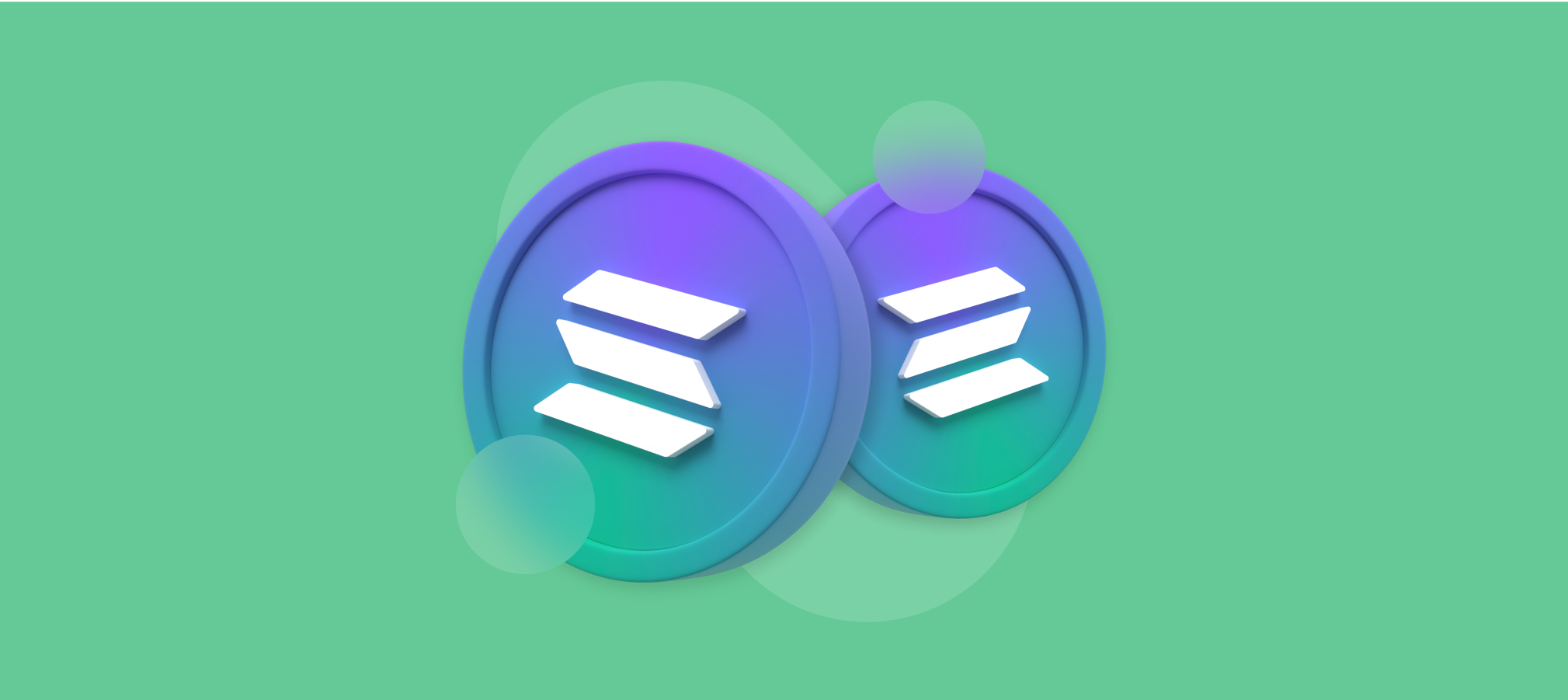What Is Solana?

This blog post will cover:
- About Solana (SOL)
- Where did Solana (SOL) come from?
- What are the advantages of Solana (SOL)?
- What are the disadvantages of Solana (SOL)?
- How to buy Solana (SOL) on SimpleSwap?
About Solana (SOL)
SOL is a coin of Solana. Solana is a relatively new player in the cryptocurrency arena, but it has already gained strength. Since its launch in March 2020 the Solana crypto, SOL, went from $0.5 to over $30. The SOL crypto can be used within the Solana ecosystem: users stake tokens to transactions’ validators and then receive rewards for their input, and pay transaction fees with SOL. This crypto can also be used in the decentralized apps built on Solana (for example, in Chainvote, a blockchain-based voting system where 1 vote equals 1 SOL).
Where did Solana (SOL) come from?
Solana is a Spanish word meaning “sunny side”, and it is both a sentimental nod to happy times the project’s creators had on a San Diego beach of the same name and a reflection of this project’s core idea — transactions being processed at the speed of light. Anatoly Yakovenko, Greg Fitzgerald, Raj Gokal, and Stephen Akridge found an elegant solution to the problem Bitcoin and Ethereum suffered from, increasing the transaction speed in the blockchain enough to compete with giants like Visa. It took three years from the initial whitepaper about Proof of History in November 2017 to the official release in March 2020. What is their secret? It takes a lot of time for computers to establish a trustworthy link with each other. So, Anatoly Yakovenko came up with an idea: what if there was one simple thing computers had to agree on in order to start trusting each other? And that thing was their internal clock (in order for two computers to trust each other, they need to agree on something, and comparing their clocks turns out to be a simple solution). In practice, it reduces the time it takes to validate the order in which transactions are made, and, as a result, users get their funds significantly faster.
What are the advantages of Solana (SOL)?
- The full ecosystemThere is an entire ecosystem of decentralized apps that sprang up around Solana: they support and extend the existing technology, bring new functionalities, and even create new tokens, exchanges, and trading platforms. This opens a multitude of possibilities for the SOL coin usage.
- Fast transactionsThanks to the innovative Proof of History method, the Solana network can process thousands of transactions in a single second, making it a potential future competitor to centralized payment networks. Simply put, it’s lightning-fast.
- Small feesNot only does the Solana blockchain provide significantly higher transaction speed, but the transaction fees are noticeably smaller than the competitors’. You can always check the current fee on Solana’s homepage.
What are the disadvantages of Solana (SOL)?
- Solana is still in the Beta stageThe project is still very young, and there is a lot of work ahead for the team: improving security, increasing the number of validators to make the network more decentralized, working on stability (for example, in December 2020 the Solana network was down for six hours). Events like these might affect its reputation, and therefore the coin price.
- Usage of RustSolana is built with help of the Rust programming language. Greg Fitzgerald suggested using Rust to improve security and performance. However, this language is not the most popular one, which decreases the number of possible code contributors.
- The public owns a limited supply of coinsOnly around 38% of SOL is owned by the public. It opens a possibility for price speculations by companies and individuals who own the majority of SOL.
How to buy Solana (SOL) on SimpleSwap?
Do you need SOL coins to pay transaction fees or use them within the Solana ecosystem? Then SimpleSwap has you covered, just follow the instructions below:
- For example, you want to swap BTC for SOL. Select the currency you want to exchange (e.g. BTC) in the first drop-downlist. Then enter the amount you want to swap.
- Select SOL in the second drop-down list. You’ll see the estimated amount that you’ll get after the exchange.
- Click the Exchange button.
- Enter the Recipient's Address. SOL will be sent. Be careful and make sure you use the correct address.
- Create the exchange.
- You will see the Bitcoin deposit address. You need to transfer the necessary amount of BTC to this address to start the BTC to SOL exchange.
You are also welcome to check our video tutorial on how to exchange Solana:
SimpleSwap reminds you that this article is provided for informational purposes only and does not provide investment advice. All purchases and cryptocurrency investments are your own responsibility.

